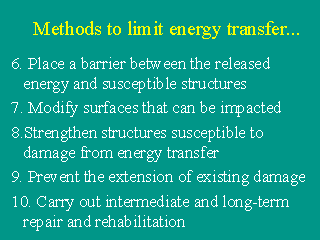

|
Go to Comment Form
|
|
Control programs to limit energy transfer (and thus reduce injuries or
their severity) may be "active" or "passive". Active programs include
those in which individuals are encouraged to undertake safer practices
to reduce their risk for injury. For example, wearing seat belts or
motorcycle helmets.
Passive programs include those in which steps to reduce energy transfer
are taken irrespective of an individualís behavior. For example, the
laws mandating air bags in cars are one form of a passive intervention.
Many in the injury field prefer passive interventions because promoting
changes in individual behavior has proven to be a difficult task in the
past.
|